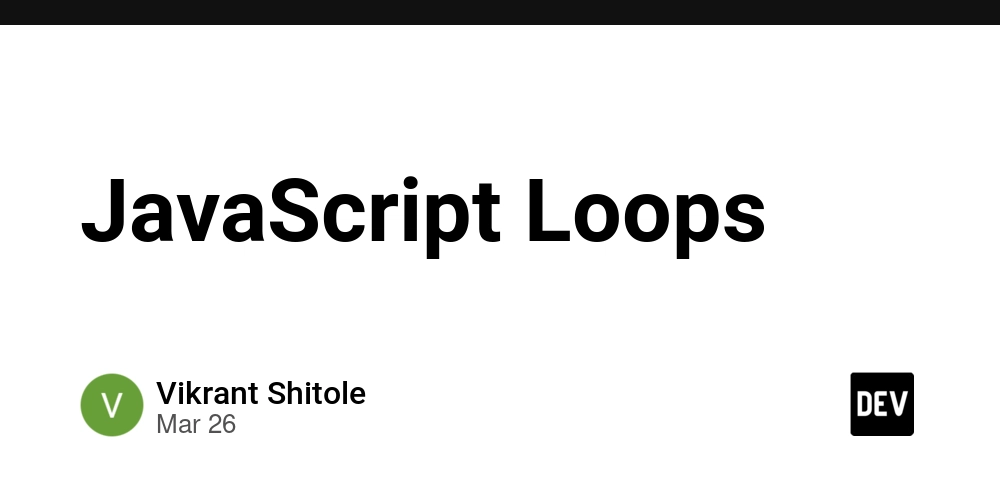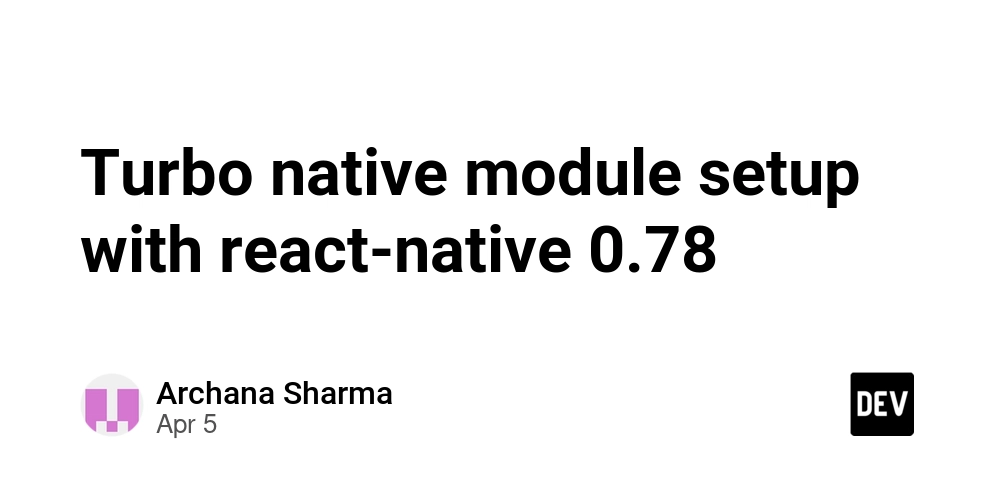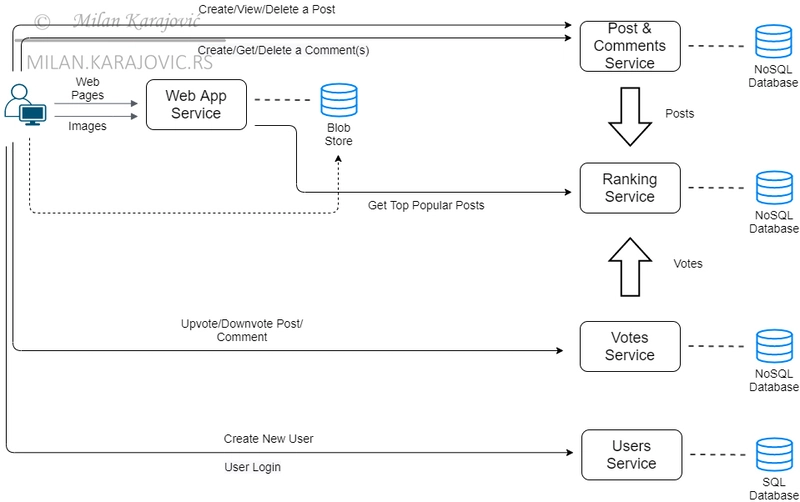JavaScript Loops
Loops are a fundamental concept in JavaScript (JS) that allow you to execute a block of code multiple times. Here are the main types of loops in JavaScript: For Loop: This loop is used when you know in advance how many times you want to execute a statement or a block of statements. While Loop: This loop continues to execute as long as the specified condition is true. Do...While Loop: This loop is similar to the while loop, but it will execute the block of code once before checking if the condition is true, then it will repeat the loop as long as the condition is true. For...In Loop: This loop is used to iterate over the properties of an object. For...Of Loop: This loop is used to iterate over iterable objects (like arrays, strings, etc.). 1. For Loop The for loop in JavaScript is a control flow statement that allows you to run a block of code a specific number of times. Here's the basic syntax: for (initialization; condition; increment) { // code to be executed } Here's a breakdown of each part: Initialization: This is executed once before the loop starts. It's typically used to initialize a counter variable. Condition: This is evaluated before each iteration. If it's true, the loop continues. If it's false, the loop stops. Increment: This is executed after each iteration. It's typically used to update the counter variable. Here's an example that prints numbers from 0 to 4: for (let i = 0; i

Loops are a fundamental concept in JavaScript (JS) that allow you to execute a block of code multiple times. Here are the main types of loops in JavaScript:
For Loop: This loop is used when you know in advance how many times you want to execute a statement or a block of statements.
While Loop: This loop continues to execute as long as the specified condition is true.
Do...While Loop: This loop is similar to the while loop, but it will execute the block of code once before checking if the condition is true, then it will repeat the loop as long as the condition is true.
For...In Loop: This loop is used to iterate over the properties of an object.
For...Of Loop: This loop is used to iterate over iterable objects (like arrays, strings, etc.).
1. For Loop
The for loop in JavaScript is a control flow statement that allows you to run a block of code a specific number of times. Here's the basic syntax:
for (initialization; condition; increment) {
// code to be executed
}
Here's a breakdown of each part:
- Initialization: This is executed once before the loop starts. It's typically used to initialize a counter variable.
-
Condition: This is evaluated before each iteration. If it's
true, the loop continues. If it'sfalse, the loop stops. - Increment: This is executed after each iteration. It's typically used to update the counter variable.
Here's an example that prints numbers from 0 to 4:
for (let i = 0; i < 5; i++) {
console.log(i);
}
In this example:
-
let i = 0initializes the counter variableito 0. -
i < 5is the condition that keeps the loop running as long asiis less than 5. -
i++increments the counter variableiby 1 after each iteration.
Here are some common mistakes people make when using for loops in JavaScript:
-
Off-by-One Errors: This happens when the loop runs one time too many or one time too few. For example, using
<=instead of<in the condition.
for (let i = 0; i <= 5; i++) { // This will run 6 times instead of 5
console.log(i);
}
-
Infinite Loops: This occurs when the loop's condition never becomes
false. This can happen if the increment/decrement step is missing or incorrect.
for (let i = 0; i < 5; ) { // Missing increment step
console.log(i);
}
- Incorrect Initialization: Forgetting to initialize the loop variable or initializing it incorrectly.
for (i = 0; i < 5; i++) { // If 'i' is not declared with 'let' or 'var', it can cause issues
console.log(i);
}
- Modifying the Loop Variable Inside the Loop: Changing the loop variable inside the loop can lead to unexpected behavior.
for (let i = 0; i < 5; i++) {
console.log(i);
i += 2; // Modifying the loop variable inside the loop
}
-
Incorrect Scope of Variables: Using variables inside the loop that are not properly scoped can cause issues, especially if they are declared with
varinstead oflet.
for (var i = 0; i < 5; i++) {
// 'i' is function-scoped, which can cause issues in larger code blocks
}
-
Not Using
letfor Loop Variables: Usingvarinstead ofletcan lead to unexpected behavior due to the differences in scoping.
for (var i = 0; i < 5; i++) {
setTimeout(() => console.log(i), 1000); // This will print '5' five times
}
2. While Loop
A while loop in JavaScript allows you to execute a block of code as long as a specified condition is true. Here's the basic syntax:
while (condition) {
// code to be executed
}
Here's a breakdown of how it works:
-
Condition: This is evaluated before each iteration. If it's
true, the loop continues. If it'sfalse, the loop stops.
Here's an example that prints numbers from 0 to 4:
let i = 0;
while (i < 5) {
console.log(i);
i++;
}
In this example:
-
let i = 0initializes the counter variableito 0. -
i < 5is the condition that keeps the loop running as long asiis less than 5. -
i++increments the counter variableiby 1 after each iteration.
Common Mistakes with while Loops
-
Infinite Loops: This happens when the condition never becomes
false. Make sure the loop has a way to terminate.
let i = 0;
while (i < 5) {
console.log(i);
// Missing increment step, causing an infinite loop
}
- Incorrect Condition: If the condition is incorrect, the loop might not run as expected.
let i = 0;
while (i > 5) { // This condition is false from the start, so the loop won't run
console.log(i);
i++;
}
- Modifying the Condition Variable Incorrectly: Ensure the variable used in the condition is modified correctly within the loop.
let i = 0;
while (i < 5) {
console.log(i);
i += 2; // This will skip some iterations
}
3. For...in Loop
The for...in loop in JavaScript is used to iterate over the properties of an object. It allows you to access each key in the object one by one. Here's the basic syntax:
for (let key in object) {
// code to be executed
}
Here's an example that demonstrates how to use the for...in loop:
const person = {
name: "John",
age: 30,
city: "New York"
};
for (let key in person) {
console.log(key + ": " + person[key]);
}
In this example:
-
personis an object with propertiesname,age, andcity. - The
for...inloop iterates over each property in thepersonobject. -
keyrepresents the current property name in each iteration. -
person[key]accesses the value of the current property.
Common Mistakes with for...in Loops
-
Iterating Over Arrays: While you can use
for...into iterate over arrays, it's generally not recommended because it iterates over all enumerable properties, including inherited ones. Usefor...ofor a standardforloop for arrays.
const array = [1, 2, 3, 4, 5];
for (let index in array) {
console.log(index); // This will print the indices, not the values
}
-
Unexpected Properties: If the object has inherited properties,
for...inwill iterate over them as well. UsehasOwnPropertyto filter out inherited properties.
const obj = {a: 1, b: 2};
Object.prototype.c = 3; // Adding an inherited property
for (let key in obj) {
if (obj.hasOwnProperty(key)) {
console.log(key + ": " + obj[key]);
}
}
-
Performance Issues:
for...incan be slower than other loops because it iterates over all enumerable properties, including those added to the prototype chain.
4. For...of Loop
The for...of loop in JavaScript is used to iterate over iterable objects such as arrays, strings, maps, sets, and more. It allows you to access each element in the iterable one by one. Here's the basic syntax:
for (let element of iterable) {
// code to be executed
}
Here's an example that demonstrates how to use the for...of loop with an array:
const array = [1, 2, 3, 4, 5];
for (let value of array) {
console.log(value);
}
In this example:
-
arrayis an array with elements1, 2, 3, 4, 5. - The
for...ofloop iterates over each element in thearray. -
valuerepresents the current element in each iteration.
Using for...of with Other Iterables
- Strings: You can iterate over each character in a string.
const str = "hello";
for (let char of str) {
console.log(char);
}
- Maps: You can iterate over the entries of a Map.
const map = new Map([
['a', 1],
['b', 2],
['c', 3]
]);
for (let [key, value] of map) {
console.log(key + ": " + value);
}
- Sets: You can iterate over the elements of a Set.
const set = new Set([1, 2, 3, 4, 5]);
for (let value of set) {
console.log(value);
}
Common Mistakes with for...of Loops
-
Using
for...ofwith Non-Iterable Objects:for...ofcan only be used with iterable objects. Trying to use it with non-iterable objects will result in an error.
const obj = {a: 1, b: 2};
for (let value of obj) { // This will throw an error
console.log(value);
}
-
Confusing
for...ofwithfor...in: Remember thatfor...ofis for iterating over values, whilefor...inis for iterating over keys or property names.
const array = [1, 2, 3];
for (let index in array) {
console.log(index); // This will print the indices (0, 1, 2)
}
for (let value of array) {
console.log(value); // This will print the values (1, 2, 3)
}
5. do...while Loop
The do...while loop in JavaScript is similar to the while loop, but with one key difference: the do...while loop will execute the block of code at least once before checking the condition. Here's the basic syntax:
do {
// code to be executed
} while (condition);
Here's an example that demonstrates how to use the do...while loop:
let i = 0;
do {
console.log(i);
i++;
} while (i < 5);
In this example:
-
let i = 0initializes the counter variableito 0. - The block of code inside the
dosection is executed once before the condition is checked. -
i++increments the counter variableiby 1 after each iteration. -
i < 5is the condition that keeps the loop running as long asiis less than 5.
Common Mistakes with do...while Loops
-
Infinite Loops: This happens when the condition never becomes
false. Make sure the loop has a way to terminate.
let i = 0;
do {
console.log(i);
// Missing increment step, causing an infinite loop
} while (i < 5);
- Incorrect Condition: If the condition is incorrect, the loop might not run as expected.
let i = 0;
do {
console.log(i);
i++;
} while (i > 5); // This condition is false from the start, so the loop will only run once
- Modifying the Condition Variable Incorrectly: Ensure the variable used in the condition is modified correctly within the loop.
let i = 0;
do {
console.log(i);
i += 2; // This will skip some iterations
} while (i < 5);
6. Continue Statement
The continue statement in JavaScript is used to skip the current iteration of a loop and proceed to the next iteration. It's often used within for, while, and do...while loops to control the flow of the loop based on certain conditions.
Here's an example using a for loop:
for (let i = 0; i < 5; i++) {
if (i === 2) {
continue; // Skip the iteration when i is 2
}
console.log(i);
}
In this example:
- The loop runs from
i = 0toi < 5. - When
iis equal to2, thecontinuestatement is executed, which skips the rest of the code inside the loop for that iteration. - The
console.log(i)statement is not executed wheniis2, so the output will be0, 1, 3, 4.
Using continue in Other Loops
- While Loop:
let i = 0;
while (i < 5) {
i++;
if (i === 2) {
continue; // Skip the iteration when i is 2
}
console.log(i);
}
- Do...While Loop:
let i = 0;
do {
i++;
if (i === 2) {
continue; // Skip the iteration when i is 2
}
console.log(i);
} while (i < 5);
Common Mistakes with continue Statement
-
Skipping Important Code: Ensure that the
continuestatement doesn't skip essential code that needs to be executed in each iteration.
for (let i = 0; i < 5; i++) {
if (i === 2) {
continue;
}
// Important code that should not be skipped
console.log("Important code for i = " + i);
}
-
Using
continueOutside of Loops: Thecontinuestatement can only be used inside loops. Using it outside of a loop will result in a syntax error.
7. Break Statement
The break statement in JavaScript is used to exit a loop or switch statement prematurely. When the break statement is executed, the loop or switch statement is immediately terminated, and the program continues with the next statement following the loop or switch.
Using break in Loops
- For Loop:
for (let i = 0; i < 5; i++) {
if (i === 2) {
break; // Exit the loop when i is 2
}
console.log(i);
}
// Output: 0, 1
- While Loop:
let i = 0;
while (i < 5) {
if (i === 2) {
break; // Exit the loop when i is 2
}
console.log(i);
i++;
}
// Output: 0, 1
- Do...While Loop:
let i = 0;
do {
if (i === 2) {
break; // Exit the loop when i is 2
}
console.log(i);
i++;
} while (i < 5);
// Output: 0, 1
Using break in Switch Statements
The break statement is also commonly used in switch statements to terminate a case and prevent the execution from falling through to subsequent cases.
const fruit = "apple";
switch (fruit) {
case "apple":
console.log("This is an apple.");
break; // Exit the switch statement
case "banana":
console.log("This is a banana.");
break;
default:
console.log("Unknown fruit.");
}
In this example:
- When the
fruitis"apple", the message "This is an apple." is printed, and thebreakstatement exits theswitchstatement. - Without the
breakstatement, the code would continue to execute the next case, which is usually not the desired behavior.
Common Mistakes with break Statement
Using
breakOutside of Loops or Switch Statements: Thebreakstatement can only be used inside loops or switch statements. Using it outside of these contexts will result in a syntax error.Forgetting to Use
breakin Switch Statements: Omitting thebreakstatement in a switch case can lead to unintended fall-through behavior, where multiple cases are executed.
When using the break statement in nested loops, it only exits the innermost loop in which it is called. The outer loops will continue to execute as usual. Here's an example to illustrate this:
for (let i = 0; i < 3; i++) {
console.log("Outer loop:", i);
for (let j = 0; j < 3; j++) {
if (j === 1) {
break; // Exit the inner loop when j is 1
}
console.log(" Inner loop:", j);
}
}
In this example:
- The outer loop runs from
i = 0toi < 3. - The inner loop runs from
j = 0toj < 3. - When
jis equal to1, thebreakstatement exits the inner loop, but the outer loop continues to the next iteration.
The output will be:
Outer loop: 0
Inner loop: 0
Outer loop: 1
Inner loop: 0
Outer loop: 2
Inner loop: 0
Breaking Out of Multiple Loops
If you need to break out of multiple nested loops, you can use labels. Here's an example:
outerLoop: for (let i = 0; i < 3; i++) {
console.log("Outer loop:", i);
for (let j = 0; j < 3; j++) {
if (j === 1) {
break outerLoop; // Exit both the inner and outer loops
}
console.log(" Inner loop:", j);
}
}
In this example:
- The
outerLooplabel is used to identify the outer loop. - The
break outerLoopstatement exits both the inner and outer loops whenjis equal to1.
The output will be:
Outer loop: 0
Inner loop: 0






















































.jpg)
%20Abstract%20Background%20112024%20SOURCE%20Amazon.jpg)





















































































































![[The AI Show Episode 142]: ChatGPT’s New Image Generator, Studio Ghibli Craze and Backlash, Gemini 2.5, OpenAI Academy, 4o Updates, Vibe Marketing & xAI Acquires X](https://www.marketingaiinstitute.com/hubfs/ep%20142%20cover.png)































































































































![From drop-out to software architect with Jason Lengstorf [Podcast #167]](https://cdn.hashnode.com/res/hashnode/image/upload/v1743796461357/f3d19cd7-e6f5-4d7c-8bfc-eb974bc8da68.png?#)





































































































.png?#)





.jpg?#)































_Christophe_Coat_Alamy.jpg?#)










































































































![Rapidus in Talks With Apple as It Accelerates Toward 2nm Chip Production [Report]](https://www.iclarified.com/images/news/96937/96937/96937-640.jpg)








































































































































